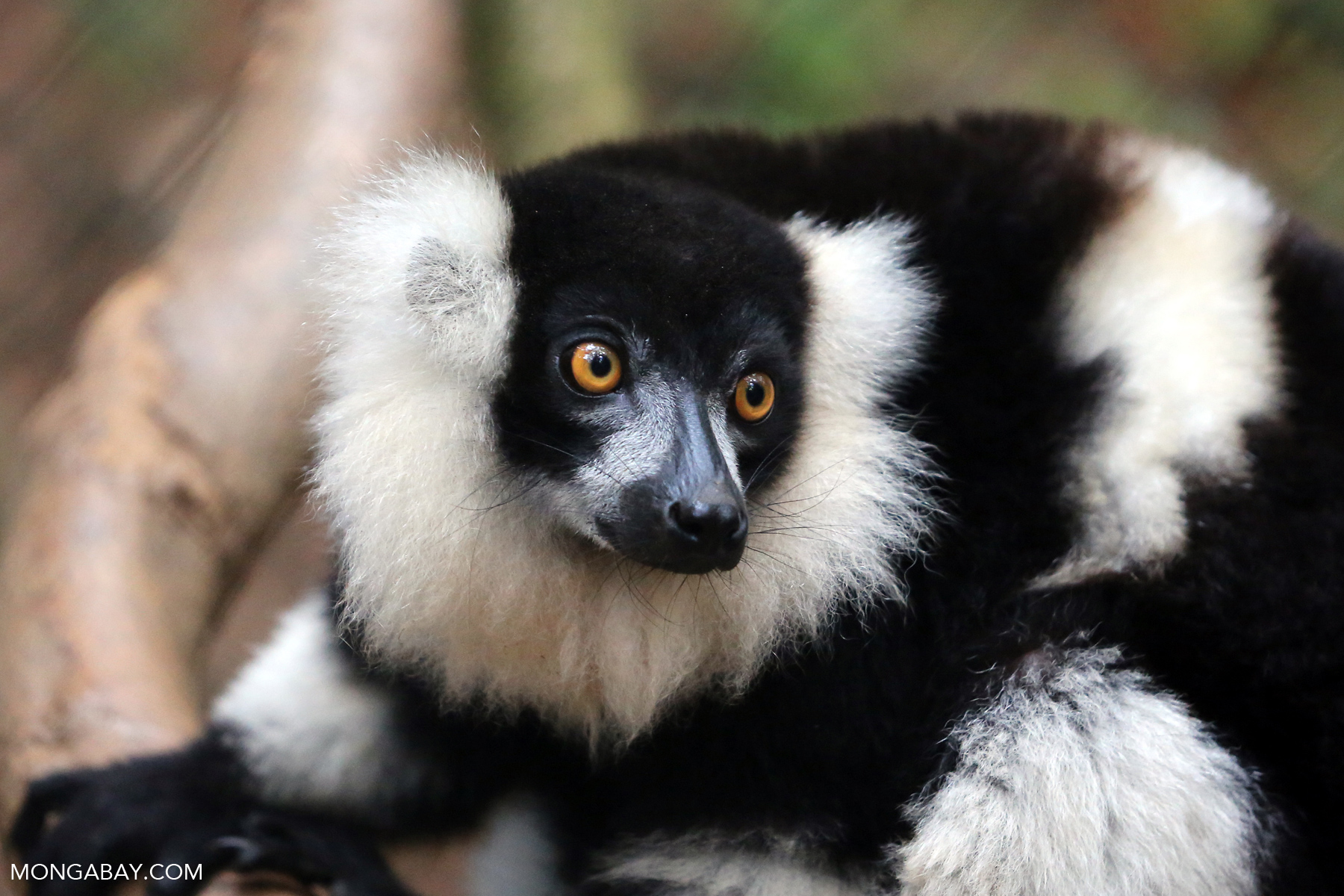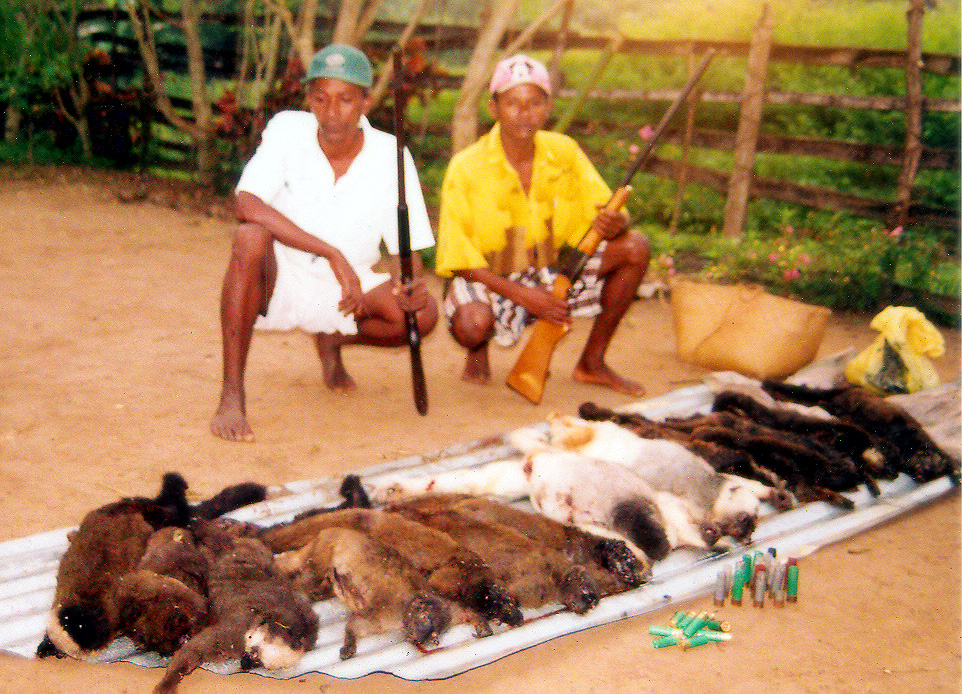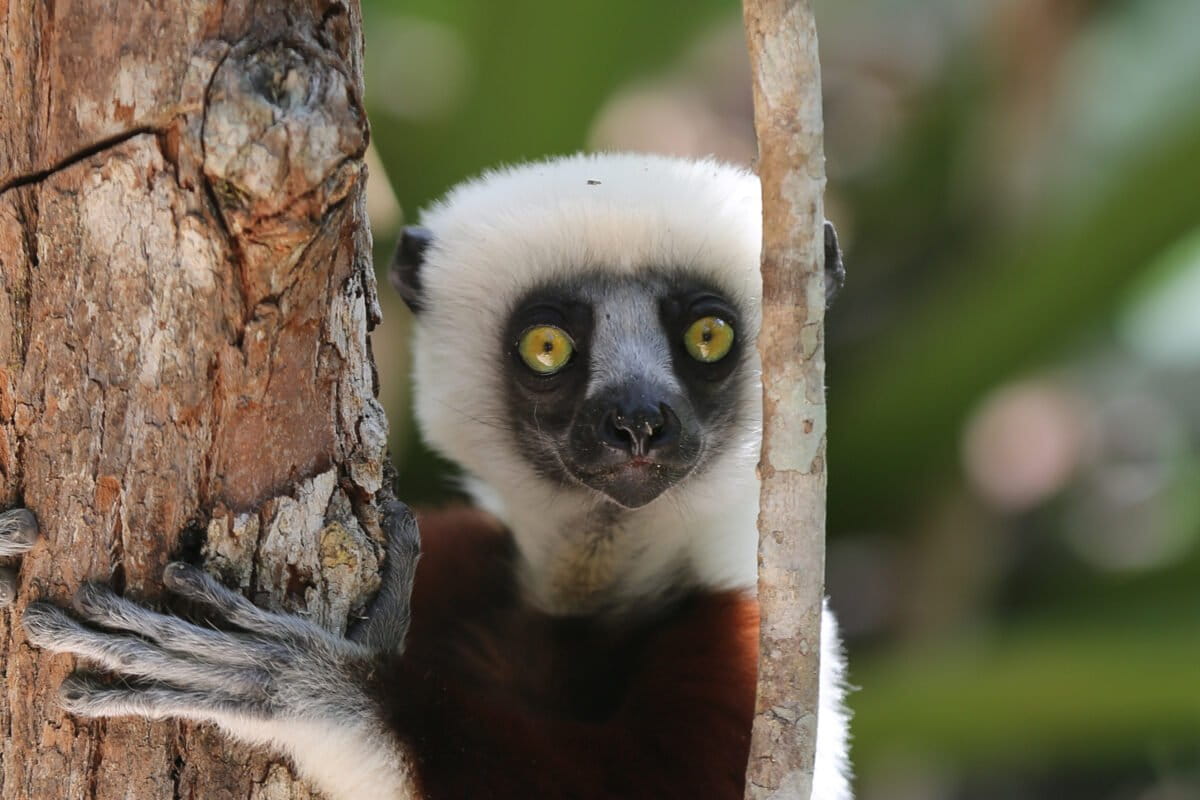Thousands of threatened lemurs are killed by specialist hunters every year to feed a lucrative urban market for their meat in cities across Madagascar.While rural subsistence hunting is seasonal and opportunistic, the year-round urban luxury trade for lemur meat threatens large-bodied species, including during key reproductive periods.Primatologists recently issued a statement calling for strategies aimed at different actors involved in lemur meat hunting, including stricter gun regulations and enforcement directed at the urban trade, and the development of economic alternatives for rural subsistence hunters.
See All Key Ideas
ANTANANARIVO — Ninety-five percent of lemur species are threatened by habitat loss, hunting and climate change. The direct threat is often understood to result from the actions of poor rural communities, but a forthcoming study has found that thousands of threatened lemurs are being hunted and killed every year to feed a lucrative urban market for their meat in cities across Madagascar.
“And 95% of that is through a hidden, direct-to-consumer trade, not restaurants,” study author Cortni Borgerson told Mongabay. “A single specialist trade-hunter can sell over 200 lemurs a year to their city clients.”
Borgerson, an anthropologist at Montclair State University in the United States, has uncovered a highly organized luxury trade carried out by specialist hunters armed with shotguns. Lemur meat is by far the most expensive meat in Madagascar’s cities, a market fueled by wealthy urban consumers seeking both a connection to the wild and a self-care practice believed to preserve youth and health: “It’s seen as a natural, wild food that can counteract the health anxieties of an increasingly modern, urban diet and lifestyle, while also providing a luxury sense of rarity and quality,” Borgerson said.
 A black-and-white ruffed lemur (Varecia variegata), an endangered species of ruffed lemur. Traders hunting lemurs for the urban luxury market are after large-bodied species like brown and ruffed lemurs. Image by Rhett A. Butler/Mongabay.
A black-and-white ruffed lemur (Varecia variegata), an endangered species of ruffed lemur. Traders hunting lemurs for the urban luxury market are after large-bodied species like brown and ruffed lemurs. Image by Rhett A. Butler/Mongabay.
Damaging luxuries
Rural subsistence hunting and the urban trade of lemur meat are largely separate but parallel systems, Borgerson said, though both exert pressure on lemur populations in different ways. Hunters seeking to feed rural families typically target the most abundant lemur species nearby at times of the year when lemurs carry the most fat. But traders hunting lemurs for the urban market are after large-bodied species like brown and ruffed lemurs, from the genera Eulemur and Varecia, all year round — even during critical birthing and infant-rearing seasons, the study found.
The International Primatological Society and the Primate Specialist Group at the IUCN, the global wildlife conservation authority, issued a joint statement on July 26 warning about the luxury trade. They said it amplifies pressure on already vulnerable people: peri-urban suppliers face prison and social shame just to earn a steady income, while wealthy urban buyers fueling demand walk away untouched. One buyer admitted bluntly to the researchers, “It doesn’t matter for us buyers, because they don’t really care if it’s already in the pot.”
Russell Mittermeier, chair of the IUCN Primate Specialist Group, said enforcement should target buyers — the real drivers of demand — rather than financially vulnerable hunter-suppliers, many of whom would take other opportunities if they could, according to Borgerson’s study.
“The government needs to use the existing laws and the judicial system to crack down on this completely unnecessary drain on lemur populations,” Mittermeier told Mongabay. “Media is also essential here. We need to embarrass those who are consumers through both national and international media and perhaps perform a sting operation to identify some of them publicly.”
All lemur species, regardless of their conservation status, are strictly protected under Madagascar’s wildlife law, which prohibits their hunting, capture, possession, consumption or trade in any form. Crimes are punishable by one to five years’ imprisonment and/or fines of 50 to 100 million ariary (around $11,000 to $22,000).
In a written response to Mongabay, Madagascar’s Ministry of Environment and Sustainable Development stressed zero tolerance and strict, impartial law enforcement toward any form of offense involving lemurs, whether by hunter-suppliers or urban consumers.
 Hunters with shotguns, silky sifakas (Propithecus candidus), and white-headed lemurs (Eulemur albifrons) shot to be sold as meat, c. 2009. Image by Simponafotsy via Wikimedia Commons (Public domain).
Hunters with shotguns, silky sifakas (Propithecus candidus), and white-headed lemurs (Eulemur albifrons) shot to be sold as meat, c. 2009. Image by Simponafotsy via Wikimedia Commons (Public domain).
Charting the next steps
The ministry is exploring the Lemur Bond, a new financing tool supported by the Global Environment Facility (GEF) and inspired by green and biodiversity bonds. The bond would generate dedicated resources to protect lemurs and their habitats, strengthen antipoaching efforts, restore forests, and fund community programs and sustainable development.
“The goal is to make lemurs emblematic species of Madagascar — a lever for mobilizing financial resources in support of biodiversity and the well-being of local communities,” the ministry said. (On Sep. 29, the Malagasy president dissolved the government in response to mass, youth-led protests against living conditions, sparked by frequent electricity and water cuts. Ministers continue to serve until new ones are named, and it’s not yet clear how this will affect projects like the Lemur Bond.)
Subsistence hunting, driven by food insecurity and local customs, remains the largest overall threat to lemurs, according to Borgerson’s study, so funding like this would be a cornerstone of efforts to curb hunting. Initiatives such as insect farming help diversify diets and reduce pressure on lemur populations.
But immediate action can also be taken directly against the luxury trade in lemur meat. The joint statement from the primatological society and the IUCN’s specialist group also directly appeals to government authorities for tighter firearm controls and stronger enforcement against wealthy urban buyers.
With the ministry signaling its support for these recommendations, the statement’s authors see an opening. “We must get shotguns out of the system — without them, the urban trade doesn’t exist at this scale,” Borgerson said. “Pairing legislation that would strictly control shotgun and ammunition with an internationally funded buy-back program would be humane and effective.”
The key, she added, is to focus on strategic, data-driven actions aimed at the actors shaping the trade, while keeping in mind the human realities behind it. “We must create a situation where selling lemur meat is not the most reliable source of high-income cash for people without land. We can do better by creating stable, non-land-based economic alternatives.”
Changing consumer behavior in cities requires framing messages around issues buyers care about most. “We [should] use a stealth marketing strategy rooted in a shared concern: health. Increasing zoonotic disease research, and smart social sharing of those findings, would allow us to reduce demand using consumers own interests,” Borgerson said.
“Eating is one of the most intimate connections we can have with nature,” she added, “[but] unfortunately it can also be the most impactful.”
Banner image: A Coquerel’s sifaka (Propithecus coquereli). Image by Rhett A. Butler/Mongabay.
Madagascar lemurs, tortoises seized in Thai bust reveal reach of wildlife trafficking
For Malagasy trapped in poverty, threatened lemurs and fossas are fair game
Eat the insects, spare the lemurs
Citation:
Borgerson, C., McKean, M. A., Sutherland, M. R., & Godfrey, L. R. (2016). Who hunts lemurs and why they hunt them. Biological Conservation, 197, 124-130. doi:10.1016/j.biocon.2016.02.012
FEEDBACK: Use this form to send a message to the author of this post. If you want to post a public comment, you can do that at the bottom of the page.

